The Jewish community in North Omaha was tied together with the establishment and growth of the community for a century. As I read personal accounts of growing up in North Omaha written by very old people in the 1980s, it became obvious people loved the area. However, it also became obvious why the Jewish community felt they needed to leave.
Origins of a Community
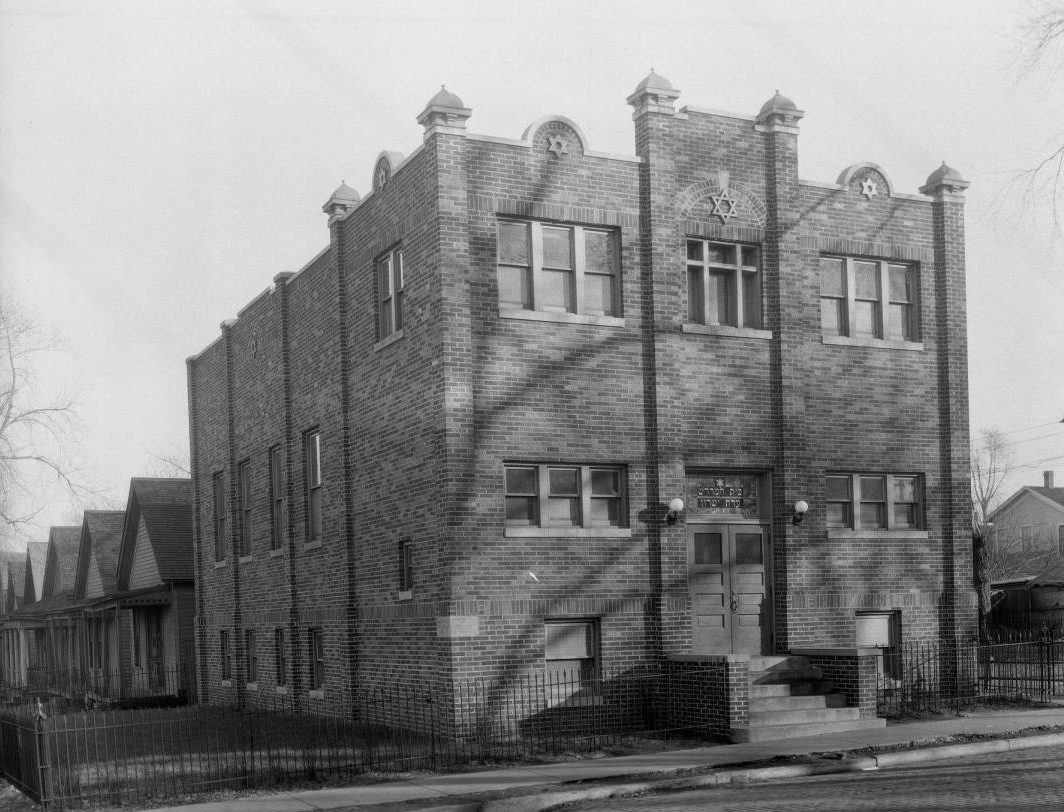
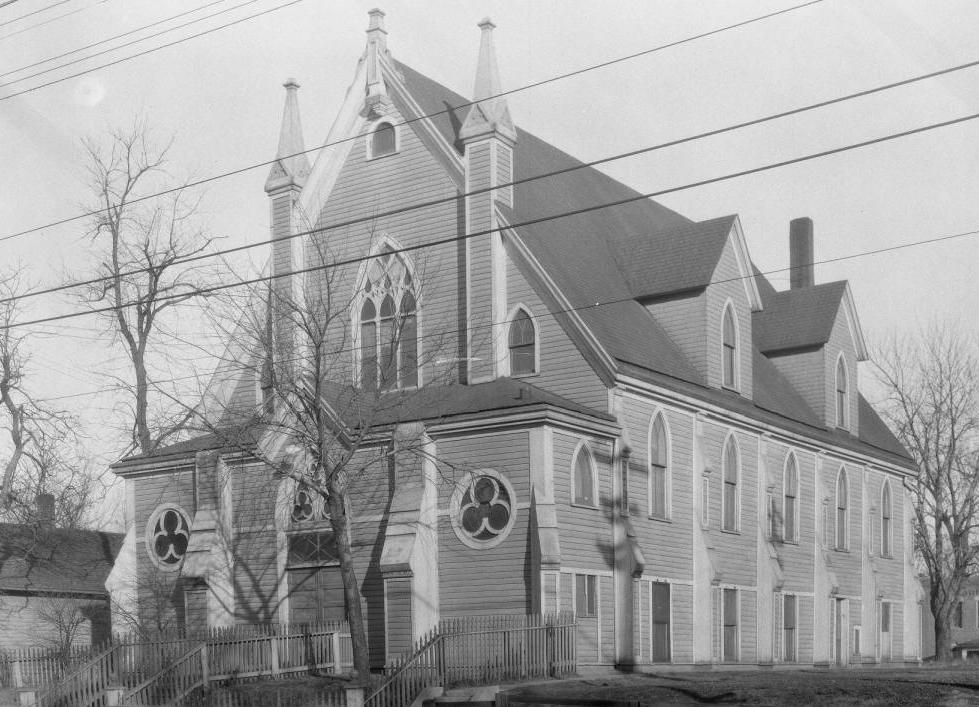
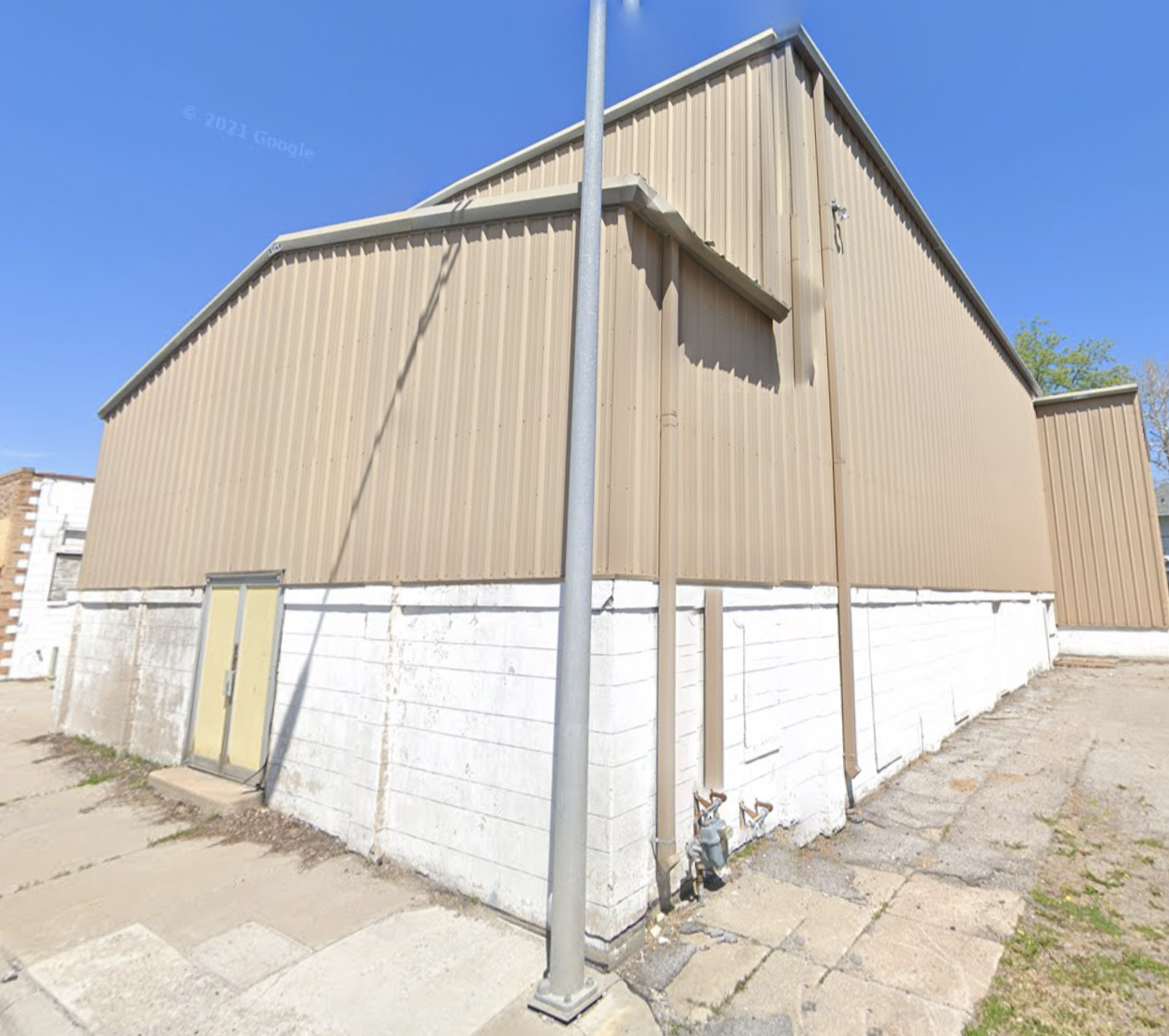


Shown above are five synagogues that used to be located north of Dodge in Omaha’s Near North Side. From upper left, they include the former Beth Hamedrosh Adas Jeshurun synagogue at 2531 Seward Street, B’nai Jacob at 1109 North 24th Street, B’nai Jacob Adas Yeshurun at 3028 Cuming Street, Shaare Zion Synagogue at 1821 North 20th Street, and; Beth Hamedrosh Hogodel Synagogue at 719 North 19th Street.
Starting in the 1860s, North Omaha was home to most of Omaha’s Jewish community for more than 50 years, and had remnants for another 50 years. The Jewish community of Omaha accumulated economic and social power collectively within a few decades of arriving, and by the 1890s many wealthy Jews owned businesses, real estate, and other assets in North Omaha, downtown Omaha, and South Omaha. Aiming to become a magnet for Jewish immigration in the United States between the 1890s and 1910s, Omaha’s Jewish community brought Jews to the city who were escaping persecution and antisemitism throughout Europe. Their numbers and influence grew in North Omaha, where most Jews lived. There were many working class Jewish families and low-income Jews living in North Omaha, too.
The Near North Side became the predominant Jewish neighborhood in Omaha starting in 1905, and stayed that way until white flight began in 1920. During that time the Jewish population of Omaha doubled, and North 24th Street became the lifeblood of the population. Eventually, Jewish-owned businesses, synagogues, family homes and other Jewish institutions were located throughout other neighborhoods in North Omaha, too, Kountze Place, North 16th, and other North Omaha neighborhoods. Many of these places were located along North 24th, from Dodge to Ames Avenue.
The Jewish people in North Omaha came from throughout Europe, including Germany, Bohemia, Russia, Romania, Poland and Hungary. Today, Omaha’s Jewish community is spread throughout the city, and no synagogues or shuls are left in North Omaha. There are Jewish cemeteries though, along with a former synagogue, lots of buildings and homes built by Jews, and the historic locations of Jewish institutions. Omaha itself still has many vestiges of antisemitism, too.
I had to learn some words in order to write this article. If you’re not Jewish, you might want to learn these words:
- Beth – Hebrew word meaning “house”, used sometimes for a Jewish house of worship.
- Kosher – Literally means proper or correct, and describes food that is okay to eat under Jewish dietary laws.
- Shul – Yiddish term for a Jewish house of worship, used primarily by Orthodox Jews.
- Synagogue – The most widely accepted term for a Jewish house of worship.
Arriving in Omaha

When Omaha was informally established in 1854, each of the city’s founders was apparently white, from an Anglo-Saxon background, and if they were religious, from a Protestant denomination – although there were a few Catholics, too.
The Omaha Claim Club was an ethnic segregation group that said they were out to keep “claim jumpers” and other people from this new city on the Plains. However, stories of their “enforcement” activities show did this by routinely targeting Irish, Italians, and others who weren’t accepted as white from settling in Omaha. Although the group didn’t last more than three years, their tactics focusing on mob violence and routine intimidation continued long beyond the formal existence of the group.
Arriving in 1867, brothers Max Meyer and Julius Meyer were among the first Jewish settlers in Omaha. The owners of a popular store in downtown Omaha, they helped other Jews emigrate to Omaha and were involved in the establishment of the first synagogue in the city in 1871. Julius Meyer was a popular trader with several local tribes, acting as an interpreter and representing tribes in several ways throughout the years. Max opened an early opera house and exposition building in Omaha, and Julius was a founder of the Omaha Musical Union.
Despite their successes and contributions to the larger life of Omaha though, Jews and even the Meyer brothers experienced antisemitism starting in those early years. Anti-Jewish attitudes were cultivated among Omaha’s settlers and early residents, and they deepened throughout the decades.
Between 1881 and 1950, thousands of Ashkenazi Jews immigrated the Meyers from Eastern Europe to Omaha fleeing pogroms and widespread poverty. At it’s absolute largest, the city’s Jewish population probably didn’t grow larger than 15,000 residents.
Building the Near North Side

The Near North Side neighborhood grew slowly at first. Starting in the 1860s, it crept northward from the city limit at present-day Cuming Street and lurched toward Lake Street.
As the neighborhood grew, a lot of different immigrant nationalities clustered there. In the Near North Side neighborhood, there was a Scandinavian area (Little Stockholm), an Irish area (Gophertown), and an Irish neighborhood, among others. The Jewish community of the city tended to cluster in this neighborhood, too. According to Jewish records, in the 1870s and 1880s a large number of Hungarians including Jews and German Jews moved into North Omaha.
By the 1880s, the Jewish community across Omaha was growing rapidly. Successful businessmen quickly moved beyond the smallish houses that originally sat throughout Omaha’s North Downtown, and moved into the big new homes being built throughout the Near North Side. When Herman Kountze opened his new suburb to the north of Lake Street, middle and upper class Jewish families were some of the first to have fine homes built in Kountze Place.
The neighborhood had more than 15 synagogues and shuls, as well as a Jewish Retirement Home, a traditional bath, and many Jewish businesses lining North 24th Street and beyond.
Jewish Businesses in the Near North Side

The earliest Jewish business people were salesmen pushing carts through neighborhoods selling household wares. Later, North Omaha’s Jewish businesses included Jewish mom-and-pop grocery stores, butcher shops, fish markets, bakeries, cafes, delis; hardware, appliance, clothing, shoe and department stores; tailor shops, repair shops, pawn shops, barber shops, beauty shops; ice houses, a junk yard, a lumber yard. Drug stores, doctors offices; laundries, and dry cleaners. Many of the dance halls, night clubs, bars, billiard parlors, movie theaters in North Omaha were Jewish-owned, too.
Some of the specific businesses along North 24th Street included Sam Freid and Iz Kuklin’s Kosher Meat Market; Altschuler’s Mattress Manufacturing; Spiegal’s Junk Yard; Wolk the Tailor and Wolk the Barber; Hans Dansky’s Garage; Siref’s Harness Shop; Sore’s Upholstery; Goldstein’s Confectionary; Micklin Lumber Yard; Sol Lewis Record Shop; Murwitz the Photographer; Silinsky Furniture; and Levine Furniture. Forbes Bakery was started by Isadore Forbes on North 24th and Lake Streets, too.
There were several kosher markets in North Omaha too, including ones owned by the Shukerts, Diamonds, Binstein and Glass families. The Nebraska Kosher Market was one, too.
Jews owned the vast majority of grocery stores in North Omaha for several decades. Starting their work pushing carts filled with fruits and vegetables, they opened the first brick-and-mortar groceries in many WASP neighborhoods throughout the community, including Bedford Place, Miller Park, Minne Lusa and other areas. Sam Gendelman’s Fort Street Grocery was one of these, operating for more than 25 years in the Miller Park neighborhood.
The Near North Side was a diverse tapestry of Omaha immigrants and African Americans, with block-by-block segregation keeping families separate while the larger neighborhood was woven together. The neighborhood institutions that were truly integrated were primarily schools and parks, which between the 1910s and 1940s had Black, Jewish, eastern European, and Italian children attending them. Some businesses catered to people of all races, including grocery stores, department stores, and a few other places. However, housing, social clubs, many businesses, and of course, faith communities were severely segregated.
Within North Omaha, Jewish businesses served many purposes.
The Omaha World-Herald reported that dozens of Jewish families were affected by the tornado, like the entire family of Nathan Krinsky, including the parents and five children, dead. The newspaper wrote,
“…many of these families were left penniless without food, clothing or shelter and in destitute circumstances and not infrequently illness from exposure and injuries sustained in the storm, followed with the result that the already great misfortunes were increased many fold.”
—Omaha Morning Bee, March 23, 1913
Immediately after the tornado, a Jewish relief station was set up at 1604 North 24th Street in the H. Freidman’s clothing store after the Easter Sunday tornado. According to the Omaha Bee, “…many of the Jewish families have not a good speaking knowledge of the English language. The Jewish people thought it best to take care of these unfortunates with the aid of those who can communicate easily with them.” The Jewish Relief Committee was made of representatives from each of the synagogues in the city. According to one source, the committee agreed to cooperate with the citywide relief committee, but, as one member of the Jewish committee said,
“We always care for our own people.”
—Omaha Morning Bee, March 26, 1913
Laying the Foundation
Between 1880 and 1920, the Near North Side boomed in growth. The neighborhoods in-filled with multi-family homes, first focusing on “St. Louis flats” (apartments above stores) and then including rowhouses, duplexes, fourplexes, and after 1900, apartments buildings. According to one personal history I read, there was a “good side” of the neighborhood, and a different side.
Different Sides of the Neighborhood

The “good side” was located between present-day Hamilton Street and Lake Street, from N. 24th to 30th Street. Professional people and business owners lived in the this neighborhood, and in time they moved further north into Kountze Place, as well. The other part of the neighborhood lived from Cuming to Lake, N. 24th to N. 16th. This is where immigrants moved to get started, and where working class people owned their homes.
Starting in the early 1880s, Russian and Romanian Jewish immigrants started flooding into North Omaha. The neighborhood they lived in was between Kellom and Lake Schools, and was referred to as Little Russia. Escaping persecution at home, these Russians came to Omaha for many reasons, including its well-established Jewish community. Starting in 1905, the Omaha World-Herald regularly wrote about plans by citywide Russian Relief Society to bring Russian Jews to Omaha to escape the pogroms there.
Among them was a child named Tillie Olsen. After going to Lake School and leaving Omaha High School early, she was a worker and labor organizer in the 1930s in South Omaha’s meatpacking industry, organizing the United Packinghouse Workers of America in the area. Influenced by her parents’ Jewish socialist leanings and North Omaha, she was an activist all her life. Using her experiences, Olsen wrote highly influential novels and some nonfiction books. She’s regarded as one of the most important Jewish authors of the century.
In July 1914 the Omaha Bee announced a new “branch library station” that would offer books in Yiddish in at unnamed drug store on North 24th Street, which was called “a center of Jewish population.”
By the end of World War I, North 24th was packed with Jewish businesses. Even after the neighborhood was redlined by the 1920s, Jewish business owners maintained their businesses throughout the neighborhood.
Jewish Institutions in North Omaha

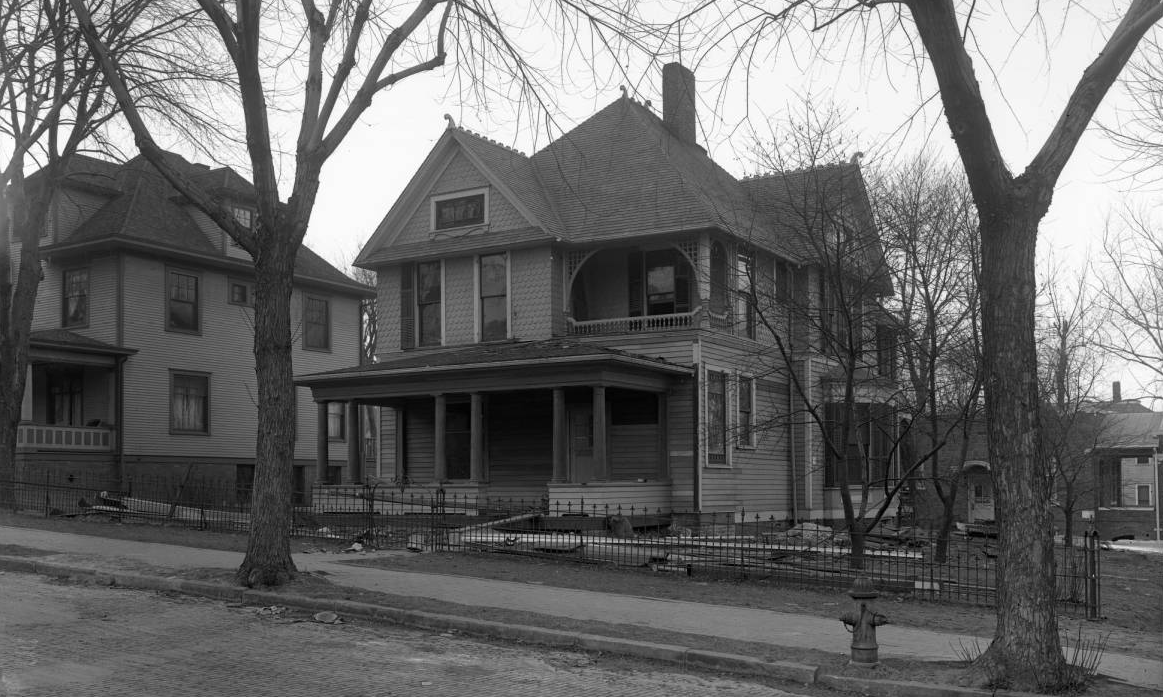
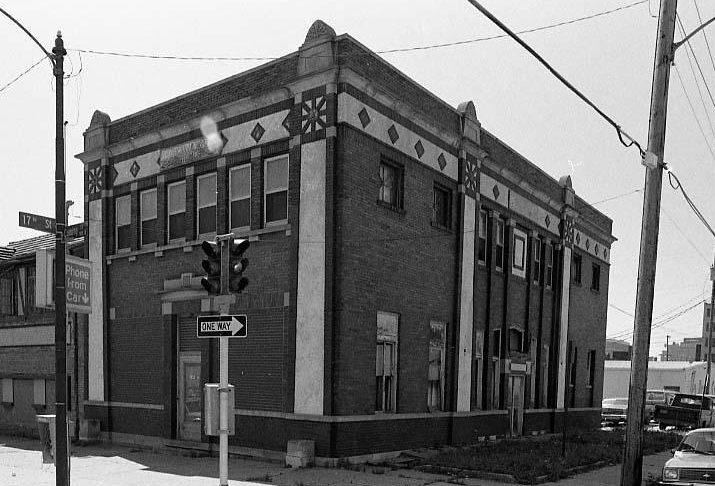
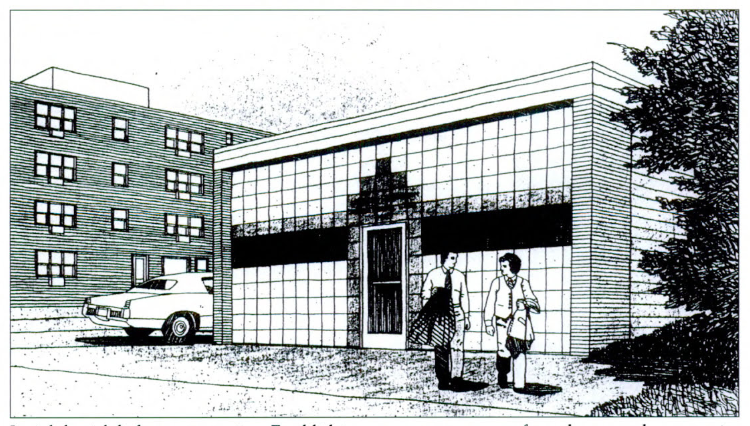
These are several Jewish institutions that used to be in North Omaha. From left, they are Jewish Old Peoples’ Home ritual bathhouse at 1512 North 25th Street; Jewish Old People’s Home at 2504 Charles Street; Jewish Funeral Home at 1912 Cuming Street, and; Louis Friedman Jewish Funeral Home at 4415 Cuming Street.
In 1952, B’nai Israel moved to 1502 N. 52nd Street and has been called Beth Israel since. They had founded the first Jewish cemetery in North Omaha in 1872. Called Pleasant Hill Cemetery, its located at 6412 North 42nd Street. The Beth Hamedrosh Hagadol, aka “The Litvsche Shul”, was built in 1883.
Golden Hill Cemetery was founded by Chevra B’nai Israel Adas Russia in 1888. Located at 5109 North 42nd Street, its one of the oldest cemeteries in Omaha.
In 1909, B’nai Jacob Anshe Sholom was a Hungarian congregation that moved several times, including to North 22nd and Cuming Street and to 6412 North 42nd Street.
B’nai Jacob Adas Yeshuron, aka “The Kapulier Shul”, was incorporated on North 19th Street in 1909. Soon after they built a new synagogue at North 24th and Nicholas. They merged with Beth Hamedrosh Adas Yeshurun and worshipped together at 2531 Seward Street. In 1948, the City of Omaha bought the land where their synagogue was and the congregation moved their building to 3028 Cuming Street, and both congregations moved to that location.
In 1916, Beth Hamedrosh Adas Jeshurun was organized by members from B’nai Israel because they lived too far from that synagogue to walk to Sabbath and holiday services. After buying a house at North 25th and Seward in 1920, in 1922 they built a new building at the same site.
Beth Hamedrosh Adas Yeshurun merged with B’nai Jacob Anshe Sholom to form B’nai Jacob Adas Yeshurun in 1952, keeping the nickname “The Kapulier Shul”. After staying at their Cuming Street address for more than 30 years, they closed in 1985.
Wise Memorial Hospital
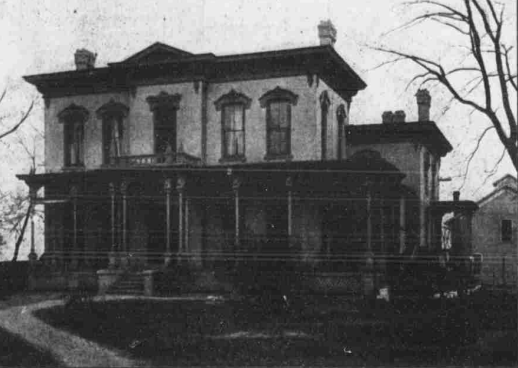
The first Wise Memorial Hospital was opened in North Omaha in 1901. Named for Rabbi Isaac Meyer Wise, founder of American Reform Judaism, it was located in a small frame building constructed at 3208 Sherman Avenue in 1901. In 1902, Wise Hospital moved to the former J.J. Brown estate in North Omaha at 2225 Sherman Avenue. The hospital stayed there until 1908, when it moved to South Omaha.
Beth Hamedrosh Adas Yeshuran
In 1922, Beth Hamedrosh Adas Yeshuran moved to 2531 Seward Street. The structure was designed in a “Modern American” style symmetrical fashion all the way around with more attention given to the main façade on the West side. Facing North 25th, this side has two piers with copper tops which extend beyond the true roof line and face an original cobblestone road. This building was first designated a historic structure in 1939, despite being constructed only 21 years earlier, 1918. The Works Progress Administration (WPA), started by President Franklin D. Roosevelt’s administration, created jobs for people during the Great Depression. This program was the only thing in place to document historic structures at the time. The WPA determined the historical significance of the building in 1939.
In 1926, the Jewish community established Shaare Zion at 1821 North 20th Street. In 1939, they moved to 1552 N. 19th Street and become known as the “the Riekes Shul” in honor of their benefactor. In 1952, Shaare Zion moved to 1522 Douglas Street.
Facilities for Jewish Elders


In 1916, the Daughters of the Israel Aid Society bought the house at 2506 Charles Street in North Omaha for $5,000 to serve as the Omaha Jewish Old People’s Home. Dedicated in 1917, the society also bought the house next door around the corner for use as a traditional bathhouse. Over the years, there were many fundraisers held for the institution, and many funerals were held there for the residents. It was open until 1940.
White Flight

Starting in the early 1920s, North Omaha started integrating in earnest. Afraid of living next to African Americans, many white people throughout the community moved to west Omaha. Institutions that had been key to the community had been closing or moving away for several decades, with the University of Omaha (1938), the Covenant Evangelical Hospital (1937), and others.
With the closure and leaving of North Omaha’s synagogues and other Jewish institutions, the Jewish community started leaving the area. However, many kept businesses along North 24th Street through the following decades.
In September 1951, Beth Hamedrosh Hagodol and B’nai Israel combined congregations to become Beth Israel. A new synagogue was built at 1502 North 52nd Street, and the Torahs from both former synagogues were moved to the new one. Temple Israel, the oldest synagogue in Omaha that was originally located downtown, moved to North 69th and Cass Streets in 1954.
In the 1960s, several riots ravished the businesses along North 24th Street and dotted across the Near North Side neighborhood. After many Jewish-owned businesses were looted, burnt and destroyed, North Omaha’s Jewish people left from the neighborhood permanently. North Omaha has never been the same. One of the things my research has shown me is that North Omaha was never a majority Jewish neighborhood. The census numbers show that first people to build between Cumings and Lake were English, Swedish, Italians, Germans and Poles. African Americans moved to the near north side from the downtown area between 1880 and 1900, which was when the Jewish started moving in. From my estimates based on census data, in the next forty years, the Jewish population in North Omaha only ever totaled 20% of all people living there. By 1950, they began moving to West Omaha.
I can’t find any solid numbers on it, but when reviewing the last names on my North 24th Street business directory, about 3/4 of them are Jewish. I think that’s where the real tension came: Jewish people never actually had a majority population in the community but controlled the vast majority of businesses. Jewish business owners in North Onaha hired African Americans, but African Americans didn’t own a majority of the businesses by the time they lived in the majority of the community, around 1960. I think that caused the fires to burn, and still causes a rift in the community today. The Jewish people are gone, but their legacy in the community is not.
THAT is Omaha history.

Jewish North Omaha Historical Tour
Synagogues and Shuls
- Former location of Beth Hamedrosh Adas Jeshurun, 1521 North 25th Street
- Former location of B’nai Jacob Adas Yeshurun, 3028 Cuming Street
- Site of Shaare Zion Synagogue aka the “Riekes Shul”, 1821 North 20th Street, 1552 N. 19th Street, 1522 Douglas Street
- Site of B’nai Jacob Adas Yeshurun, aka the “Kapulier Shul”, 1521 North 21st Street
- Sites of B’nai Jacob, North 22nd and Cuming (Wolf’s Hall), North 22nd and Nicholas Streets (Founded in 1890)
- Site of Beth Hamedrash Hagodol, 719 North 19th Street, Florence Boulevard and Burt Streets (Founded in 1897)
- Site of Beth Hamedrosh Adas Yeshurun, North 19th Street (Founded in 1883)
- Site of Chevra B’nai Israel Adas Russia (Founded in 1886)
- Sites of B’nai Jacob Anshe Sholom, North 22nd and Cuming Street, 1111 North 24th Street, 6412 N. 42nd Street
- Site of Beth Hamedrosh Hagadol, aka the “Litvsche Shul”, 723 North 19th Street
- Site of B’nai Israel, 1502 N. 52nd Street (Founded in 1868)
- Site of Congregation Chov’ve Zio (Founded in 1902)
- Site of Midrash Haggodol, aka Chevra Israel (Founded in 1886)
- Site of “Hungarian Congregation” (Founded in 1882)
- Former location of Beth Israel Synagogue, 1502 North 52nd Street
Other Sites
- Pleasant Hill Cemetery, 6412 North 42nd Street (Established in 1872)
- Golden Hill Cemetery, 5109 North 42nd Street
- Temple Isreal Cemetery, 6412 North 42 Street
- Louis Friedman Jewish Funeral Home, 4415 Cuming Street
- Site of Jewish Old People’s Home, 2504 Charles Street
- Site of Jewish Old Peoples’ Home ritual bathhouse, 1512 North 25th Street
- Sites of First Wise Memorial Hospital, 3208 Sherman Avenue, 2225 Sherman Avenue (Founded in 1898)
- Site of Dr. Philip Sher Jewish Home for the Aged, 101 North 20th Street
- Site of (Original) Jewish Funeral Home, 1912 Cuming Street
- Site of 1913 Jewish relief station from the Easter Sunday tornado, 1604 North 24th Street
Jewish Businesses
- Former location of Micklin Lumber Company, 2109 North 24th Street
- Former location of Ideal Hotel, Ideal Furniture and Ideal Hardware, 2524 North 24th Street
- Former location of Forbes Bakery, 2711 North 24th Street
- Former location of J. Bernstein Groceries and Meats, 4901 North 16th Street
- Site of Mushkin and Epstein Kosher Market, 1415 North 24th Street
- Site of Shalkofski Soft Drink Parlor, 1502 Webster Street
- Site of Marks Kosher Market, 1804 North 20th Street
- Site of Sam Freid and Iz Kuklin’s Kosher Meat Market, 1513 North 24th Street
- Site of Silver Star Confectionery, 1604 North 24th Street
- Site of Micklin Lumber Company, 19th and Nicholas Street
- Site of Shukert Kosher Market, 1619 1/2 North 24th Street
- Site of Kosher Market, 1415 North 24th Street
- Site of Wolk the Tailor, 1506 North 24th Street
- Site of Wolk the Barber, 1508 North 24th Street
- Site of Milton Mayper Clothing, 1412 North 24th Street
- Site of Joe Spiegal’s Junk Yard, North 24th and Caldwell
- Site of Hans Dansky’s Garage, 2003 Florence Boulevard
- Site of Kulakofsky Kosher Market, 119 North 12th Street
- Site of Siref’s Harness Shop
- Site of Sore’s Upholstery
- Site of Goldstein’s Confectionary
- Site of Sol Lewis Record Shop
- Site of Murwitz the Photographer
- Site of Silinsky Furniture
- Site of Levine Furniture
- Site of Jewish Library
- Site of Altschuler’s Mattress Manufacturing
- Former Beth Hamedrosh Adas Yeshuran Synagogue, 2531 Seward Street
You Might Like…
- A History of Antisemitism in Omaha
- A History of Relations between Jews and African Americans in Omaha
- North Omaha Chronicles, 12-17-19
- North Omaha Chronicles, 12-21-19
- North Omaha Chronicles, 12-22-19
- A History of Hungarians in North Omaha
- A History of North 24th Street
- A History of North 16th Street
- A History of Health and Healthcare in North Omaha
- A History of Arlena Lodge, The Brandeis Family Summer Home
MY ARTICLES ABOUT THE HISTORY OF OMAHA’S NEAR NORTH SIDE
GROUPS: Black People | Jews and African Americans | Jews | Hungarians | Scandinavians | Chinese | Italians
EVENTS: Redlining | North Omaha Riots | Stone Soul Picnic | Native Omaha Days Festival
BUSINESSES: Club Harlem | Dreamland Ballroom | Omaha Star Office | 2621 North 16th Street | Calhoun Hotel | Warden Hotel | Willis Hotel | Broadview Hotel | Carter’s Cafe | Live Wire Cafe | Fair Deal Cafe | Metoyer’s BBQ | Skeet’s | Storz Brewery | 24th Street Dairy Queen | 1324 N. 24th St. | Ritz Theater | Alhambra Theater | 2410 Lake Street | Carver Savings and Loan Association | Blue Lion Center | 9 Center Variety Store | Bali-Hi Lounge
CHURCHES: St. John’s AME Church | Zion Baptist Church | Mt. Moriah Baptist Church | St. Philip Episcopal Church | St. Benedict Catholic Parish | Holy Family Catholic Church | Bethel AME Church | Cleaves Temple CME Church | North 24th Street Worship Center
HOMES: A History of | Logan Fontenelle Housing Projects | The Sherman | The Climmie | Ernie Chambers Court aka Strelow Apartments | Hillcrest Mansion | Governor Saunders Mansion | Memmen Apartments
SCHOOLS: Kellom | Lake | Long | Cass Street | Izard Street | Dodge Street
ORGANIZATIONS: Red Dot Athletic Club | Omaha Colored Baseball League | Omaha Rockets | YMCA | Midwest Athletic Club | Charles Street Bicycle Park | DePorres Club | NWCA | Elks Hall and Iroquois Lodge 92 | American Legion Post #30 | Bryant Resource Center | People’s Hospital | Bryant Center
NEIGHBORHOODS: Long School | Logan Fontenelle Projects | Kellom Heights | Conestoga | 24th and Lake | 20th and Lake | Charles Street Projects
INDIVIDUALS: Edwin Overall | Rev. Russel Taylor | Rev. Anna R. Woodbey | Rev. Dr. John Albert Williams | Rev. John Adams, Sr. | Dr. William W. Peebles | Dr. Craig Morris | Dr. John A. Singleton, DDS | Dr. Aaron M. McMillan | Mildred Brown | Dr. Marguerita Washington | Eugene Skinner | Dr. Matthew O. Ricketts | Helen Mahammitt | Cathy Hughes | Florentine Pinkston | Amos P. Scruggs | Nathaniel Hunter | Bertha Calloway
OTHER: 26th and Lake Streetcar Shop | Webster Telephone Exchange Building | Kellom Pool | Circus Grounds | Ak-Sar-Ben Den
Elsewhere Online
- Nebraska Jewish Historical Foundation official website
- Beth Hamadrosh Cemetery – Graveyards of Omaha website
Sources
- The Jews of Omaha: The first sixty years by Carol Gendler for the University of Nebraska at Omaha on March 1, 1968.
- The Jewish Foundation. “The History of Jewish Omaha“
- Pollak, O. B. (2011) “The Jewish Peddlers of Omaha,” Nebraska History 63 (1982): 474-501.
- “OMAHA: Douglas and Sarpy Counties“. International Jewish Cemetery Project, International Association of Jewish Genealogical Societies.
- Alder, C. and Szold, H. (1919) American Jewish Year Book 5680, Volume 21. American Jewish Society.
- Postal, B. and Koppman, L. (1954) A Jewish Tourist’s Guide to the U.S. Jewish Publication Society of America.
- Nebraska Jewish Historical Society (October 1995) Newsletter.
- Grossman, A. (April 1984) “North 24th – ‘Street of Dreams‘”, Newsletter 11, 1. Nebraska Jewish Historical Society.
- Pollak, O. B. (2001) Jewish Life in Omaha and Lincoln: A Photographic History. Arcadia Publishing.
- “Congregation of Israel First permanent Jewish House of Worship in Nebraska” by Jewish American Society for Historic Preservation
- Tillie Olsen (2004) “Yonnondio: From the Thirties.” University of Nebraska Press.
BONUS PICS!
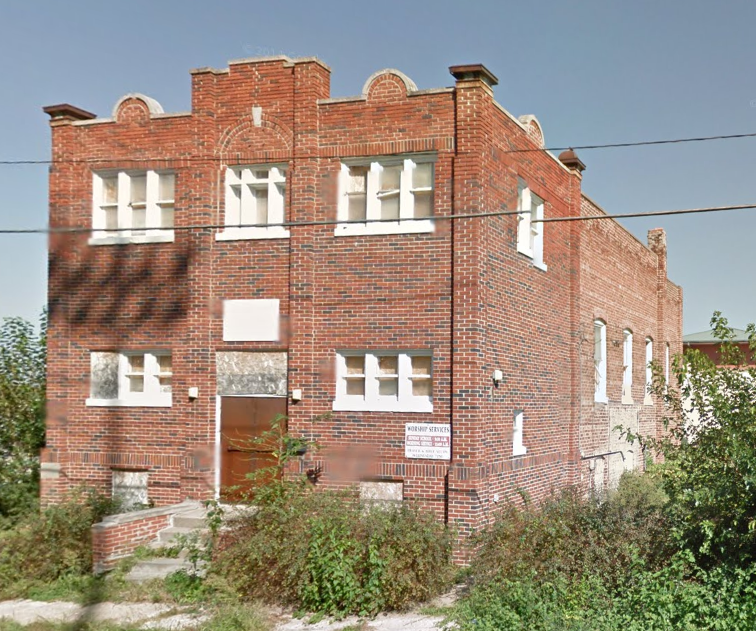





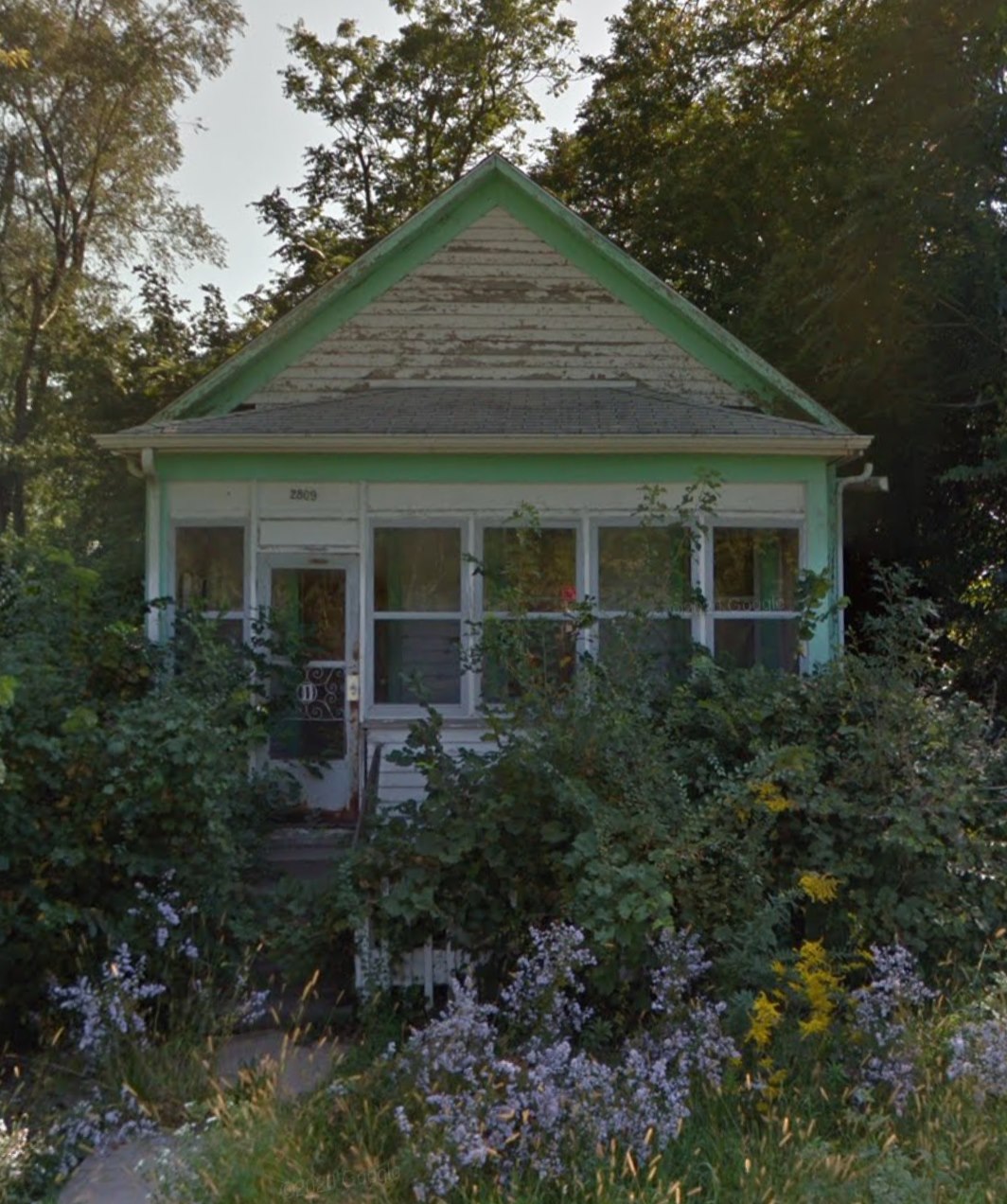


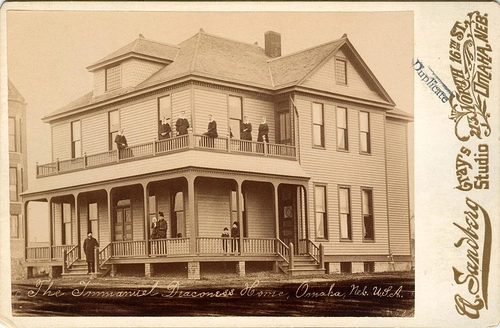

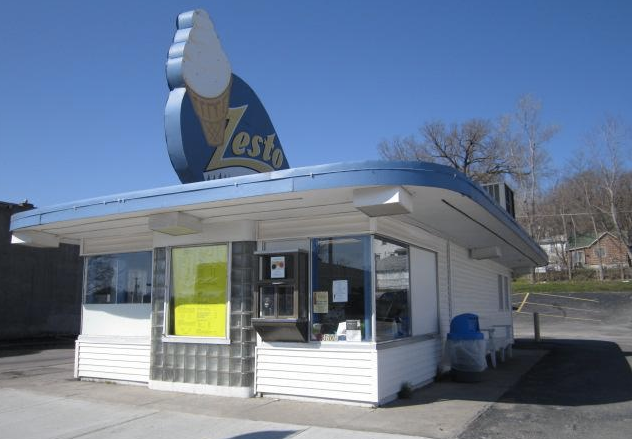
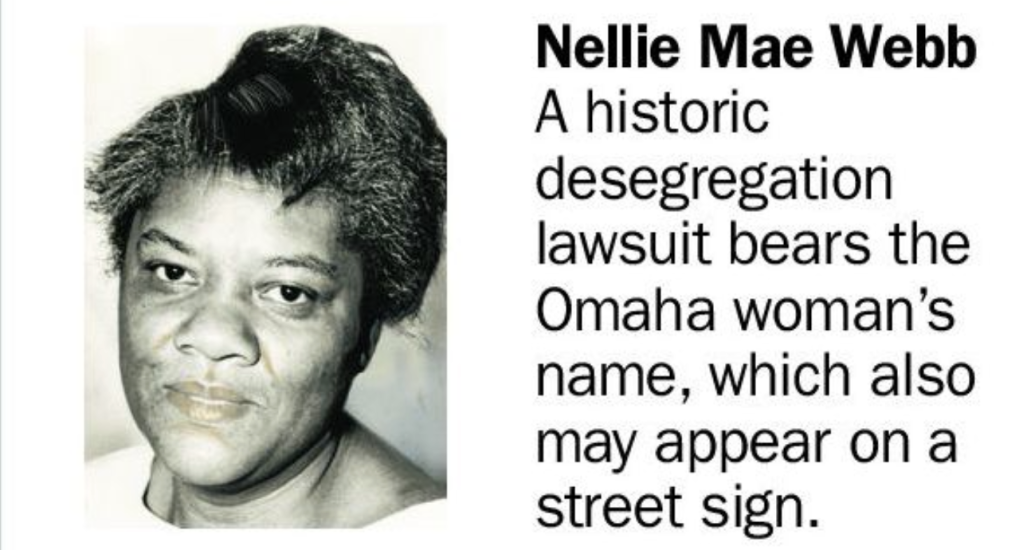
Leave a comment